
The realm of rock and roll boasts legendary tales, but few shine with the intricate artistry of Queen. From late 1960s West London, this band embarked on a journey that redefined musical boundaries, captivating millions and leaving an indelible mark on global culture. Their story embodies relentless innovation, breathtaking talent, and grand vision.
As senior media editors, we see Queen’s early trajectory as a masterclass in development. Their ascent, built on virtuosity, chemistry, and daring, laid a foundation for monumental impact. Each album and pivotal moment was a carefully crafted step. In this sophisticated exploration, we trace their formation, the craftsmanship behind their early sonic tapestries, and the breakthroughs that transformed them into rock royalty.
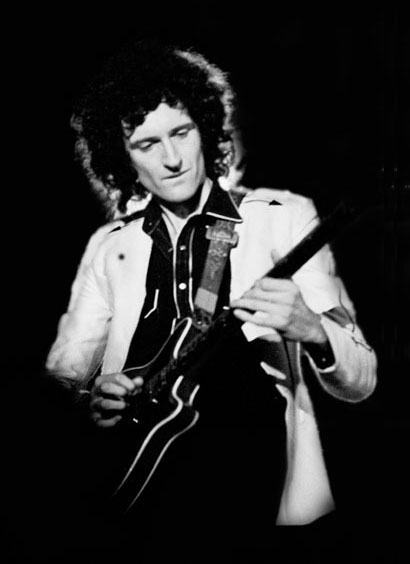
1. **The Genesis of a Legend: Foundations in West London (1968-1970)**Queen’s story began in late 1960s west London. Guitarist Brian May, who built his own guitar in 1963, initially formed 1984 with Tim Staffell. May then left for his Physics degree, seeking a group for original material. This led him to form Smile with Staffell (on bass) and keyboardist Chris Smith.
The drummer search ensued, May advertising for a “Mitch Mitchell/Ginger Baker type.” Roger Taylor, a dental student, successfully auditioned and joined Smile. The group even performed at the Royal Albert Hall in early 1969, prior to Smith’s departure, demonstrating early ambition.
At Ealing Art College, Staffell befriended Farrokh “Freddie” Bulsara. Bulsara, a keen Smile fan, wished to join as lead singer. His presence, and his Kensington Market stall with Taylor, brought him closer to the legendary ensemble.
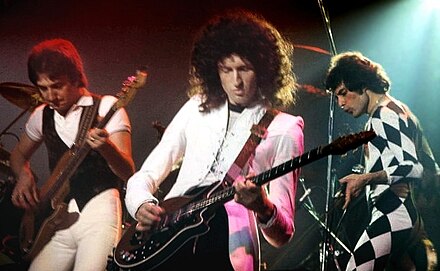
2. **Forging the Iconic Line-up: From Smile to Queen (1970-1971)**Tim Staffell left Smile in 1970, citing musical divergence and lack of success. This paved the way for Farrokh Bulsara. The remaining members embraced Bulsara as lead singer, recruiting Taylor’s friend Mike Grose as bassist. Their first gig was in Truro on June 27, 1970.
Bulsara proposed the name “Queen,” declaring, “it’s wonderful, dear, people will love it.” He also adopted the surname Mercury, inspired by “My Fairy King.” The newly christened band played their first London gig on July 18, showcasing future album material.
Producer John Anthony suggested a different bassist. This led to a transitional phase: Mike Grose departed, replaced by Barry Mitchell for thirteen shows, then Doug Bogie for two in January 1971. This pursuit refined the lineup.
Stability arrived in February 1971 with John Deacon. An experienced bassist, Deacon brought a quiet demeanor and electronics skills, complementing the band. On July 2, Queen played their first show with the classic lineup at a Surrey college.
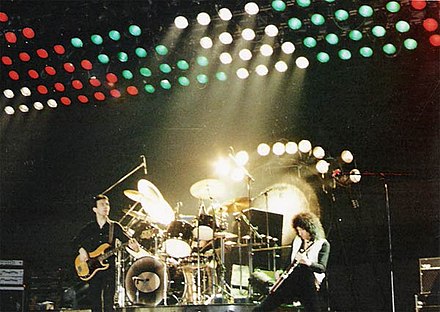
3. **The Debut: Queen’s First Steps and Early Sound (1971-1973)**With their definitive lineup, Queen pursued recording. Brian May connected with engineer Terry Yeadon, who offered De Lane Lea Studios for demos. As the studio needed equipment testers, Queen recorded five original songs, including “Keep Yourself Alive,” refining their sound.
Producers John Anthony and Roy Thomas Baker were captivated by “Keep Yourself Alive,” actively promoting the band. Ken Testi secured a Charisma offer, but Queen declined, opting for a management deal with Trident Studios’ Neptune Productions. This gave them access to high-tech recording facilities, which Roger Taylor called “gold dust.”
Recording their debut album, *Queen*, was intense. Producers clashed with the band, especially May, aiming for technical perfection and live energy, resulting in “kitchen sink overproduction.” The album, a mix of heavy metal and progressive rock, used the De Lane Lea demo for “The Night Comes Down.” Mike Stone finalized “Keep Yourself Alive.”
Completed in January 1972, Queen remained unsigned until Trident secured an EMI deal in March 1973. “Keep Yourself Alive” was released as a single on July 6, followed by *Queen* a week later. Critics responded positively, though mainstream attention was limited. Retrospectively, “Keep Yourself Alive” is a highlight, ranked 31st in *Rolling Stone’s* “100 Greatest Guitar Songs of All Time.” The album achieved gold in UK and US.
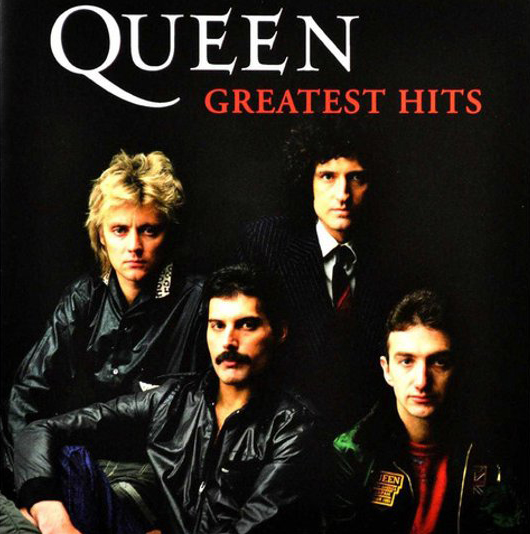
4. **Breaking New Ground: The Artistry of Queen II (1973-1974)**Following their debut, Queen began recording *Queen II* in August 1973, utilizing consistent studio access. Brian May crafted “Procession,” a multi-layered guitar introduction. Freddie Mercury wrote “The Fairy Feller’s Master Stroke,” inspired by Richard Dadd’s painting, showcasing compositional ambition.
Late 1973 saw Queen touring the UK, supporting Mott the Hoople, expanding their audience. The tour culminated in two sold-out shows at the Hammersmith Odeon on December 14. Their confidence showed in January 1974 at Australia’s Sunbury Pop Festival, where despite jeers, Mercury boldly declared, “when we come back to Australia, Queen will be the biggest band in the world!”
*Queen II* released in March 1974, featuring Mick Rock’s iconic Dietrich-inspired cover, later inspiring the “Bohemian Rhapsody” video. The album reached UK number five and was their first UK chart album. Mercury’s lead single, “Seven Seas of Rhye,” became their first hit, climbing to number 10.
The album cemented their “layered” sound: complex instrumental passages, fantasy-themed lyrics, and virtuosity. It included the six-minute epic “The March of the Black Queen,” chorus-less. Critical reaction was mixed, but *AllMusic* notes it as a hardcore fan favorite. *Queen II* is the first of three Queen albums in *1001 Albums You Must Hear Before You Die*.
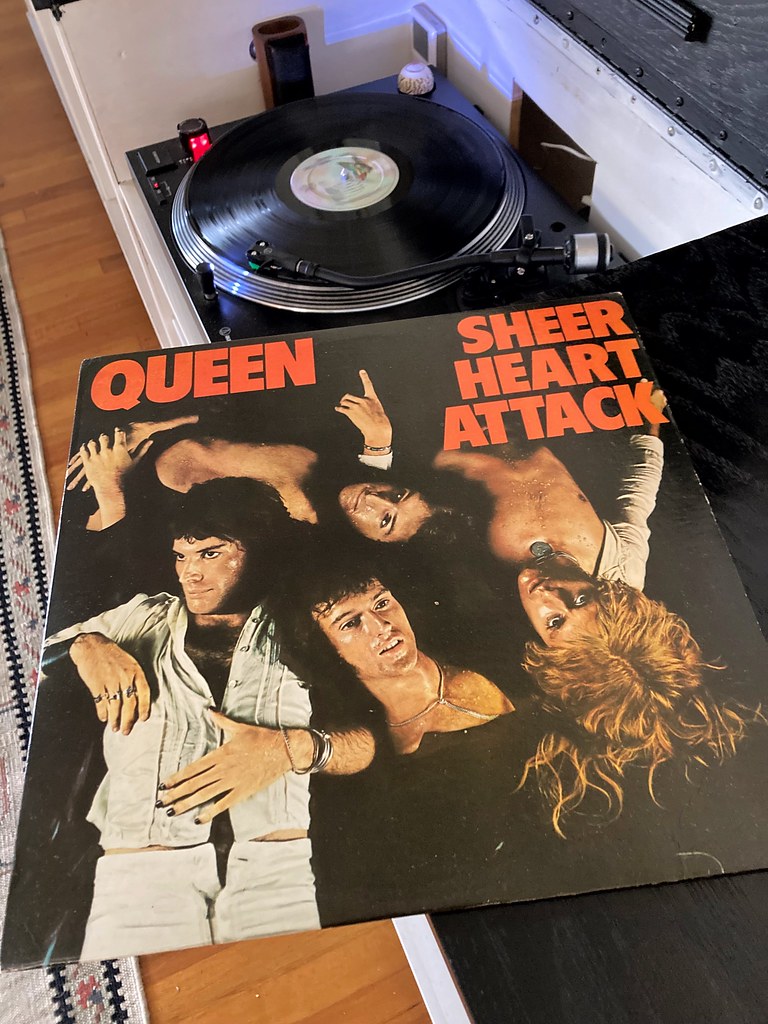
5. **Emergence on the World Stage: Sheer Heart Attack’s Global Impact (1974)**1974 brought triumph and adversity. During their first US tour in May, Brian May collapsed from hepatitis, forcing cancellations. Despite this, May returned midway through recording *Sheer Heart Attack*, released later that year. The album succeeded, reaching UK number two, selling well in Europe, and achieving US gold, marking Queen’s true international breakthrough.
*Sheer Heart Attack* was a genre-blending album, incorporating British music hall, heavy metal, ballads, ragtime, and Caribbean styles. May’s “Now I’m Here” chronicled their curtailed US tour, while “Brighton Rock” showcased his guitar solos. John Deacon contributed his first song, “Misfire.” Freddie Mercury penned “In the Lap of the Gods… Revisited,” envisioning audience sing-alongs.
The album’s success was amplified by “Killer Queen,” written by Mercury. It soared to UK number two and became their first US hit, reaching *Billboard* Hot 100 number 12. Recorded in Wales, the song expertly combined camp, vaudeville, and British music hall with May’s guitar. “Now I’m Here” was the second single.
*Sheer Heart Attack* received enduring critical acclaim. *Classic Rock* ranked it 28th in “The 100 Greatest British Rock Albums Ever,” and *Mojo* placed it at No. 88 in “The 100 Records That Changed the World.” It stands as the second of three Queen albums in *1001 Albums You Must Hear Before You Die*, solidifying its pivotal role.
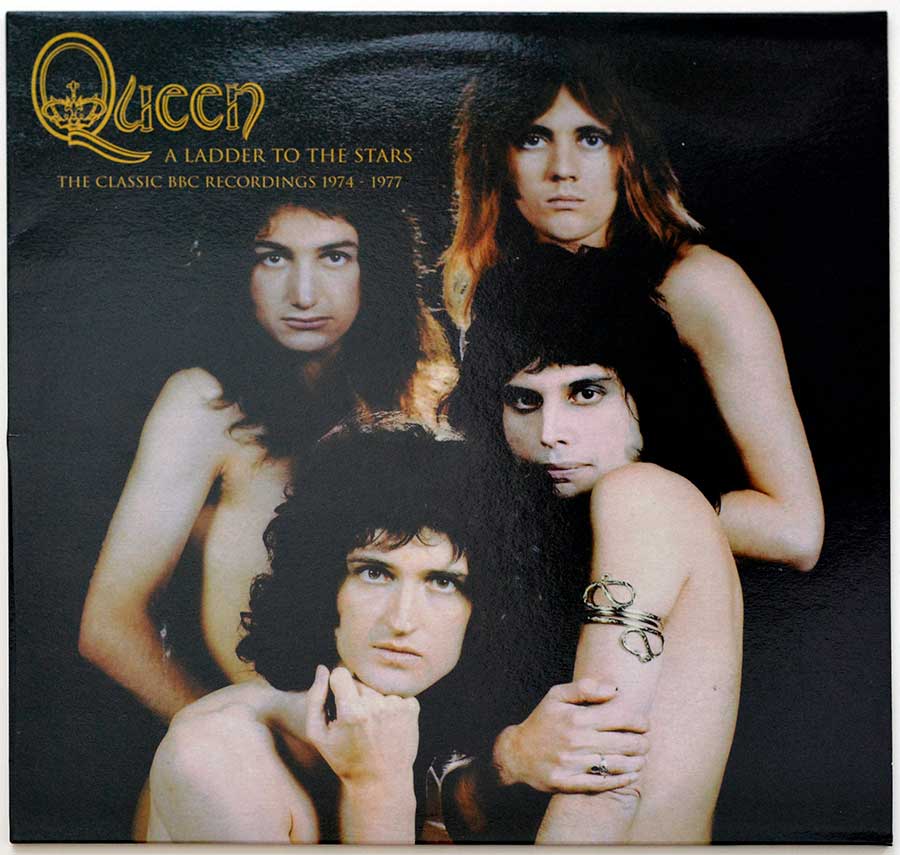
6. **A Night at the Opera: Crafting a Masterpiece (1975)**Despite escalating success, Queen faced financial turmoil in January 1975, bound by a restrictive Trident deal. John Deacon was denied house deposit funds. EMI intervened; lawyer Jim Beach negotiated an acrimonious split from Trident in August. The band then chose Elton John’s manager, John Reid, who empowered them: “I’ll take care of the business; you make the best record you can.”
Freed from constraints, Queen began *A Night at the Opera*, named after the Marx Brothers movie. Costing £40,000 across three studios, it was the most expensive album ever produced then, showcasing diverse styles and pioneering stereo experimentation. Mercury’s contributions included “Death on Two Legs,” a critique aimed at Trident, and the camp “Lazing on a Sunday Afternoon” and “Seaside Rendezvous.”
Brian May’s eight-minute epic, “The Prophet’s Song,” featured a complex middle section of layered choral sound. Freddie Mercury’s ballad, “Love of My Life,” displayed delicate harp and overdubbed vocal harmonies, exemplifying intricate craftsmanship. This album was a powerful declaration of Queen’s creative control and collective genius.
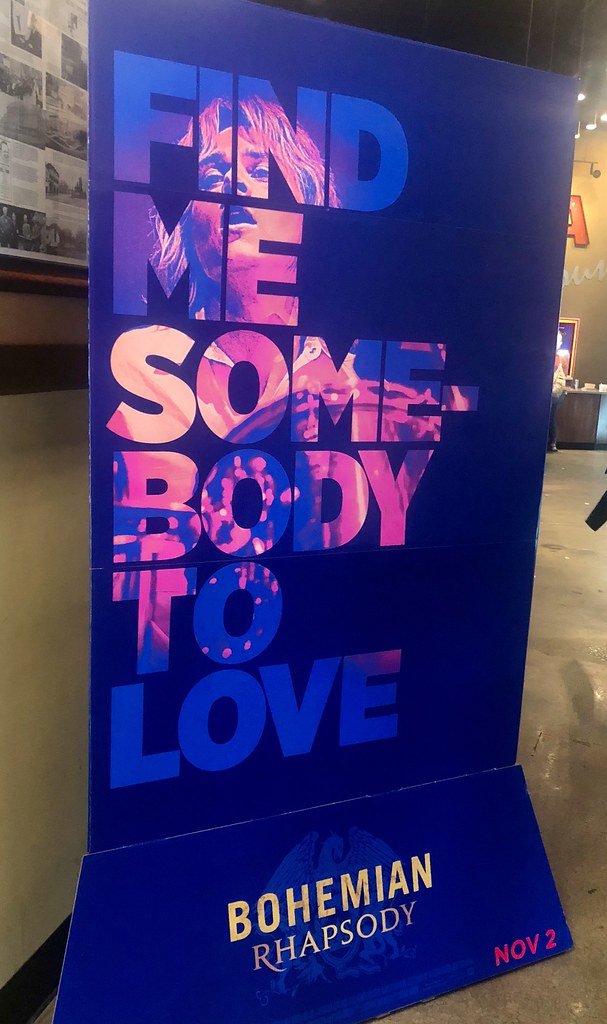
7. **The Rhapsody Heard Around the World: A Groundbreaking Single (1975)**Within *A Night at the Opera* lay its crowning achievement: “Bohemian Rhapsody.” Originating from Mercury’s Ealing College pieces, Brian May confirmed, “He knew exactly what he was doing. It was Freddie’s baby.” Mercury famously previewed the song to Roy Thomas Baker, halting to announce, “This is where the opera section comes in.” The band recorded the backing track, leaving a 30-second section for operatic vocals, reportedly 180 overdubs deep, wearing the tape thin.
EMI initially resisted releasing “Bohemian Rhapsody,” deeming it too long, but Queen refused an edit. Its breakthrough was spearheaded by Capital London radio DJ Kenny Everett, who defied instructions and played it fourteen times over a single weekend. Overwhelming public response compelled EMI to release it.
The single soared to UK number one for nine weeks, becoming the third-best-selling single and the best-selling commercial single. It sold a million copies on two occasions and became Christmas number one twice. It reached US number nine, with a 1992 re-release hitting number two. It has been voted the greatest song of all time in three different polls.
Its revolutionary music video, directed by Bruce Gowers, was equally impactful. Conceived to avoid *Top of the Pops* appearances and awkward miming, it was filmed for £3,500 in three hours. *Rolling Stone* credits it with “practically inventing the music video,” and *The Guardian* stated it “ensured videos would henceforth be a mandatory tool in the marketing of music.”
*A Night at the Opera* itself was a resounding success, going triple platinum in the US and widely acclaimed. It was voted the 13th-greatest album of all time in a 2004 Channel 4 poll and features in *1001 Albums You Must Hear Before You Die*. John Deacon’s “You’re My Best Friend” also became a worldwide top-ten hit.
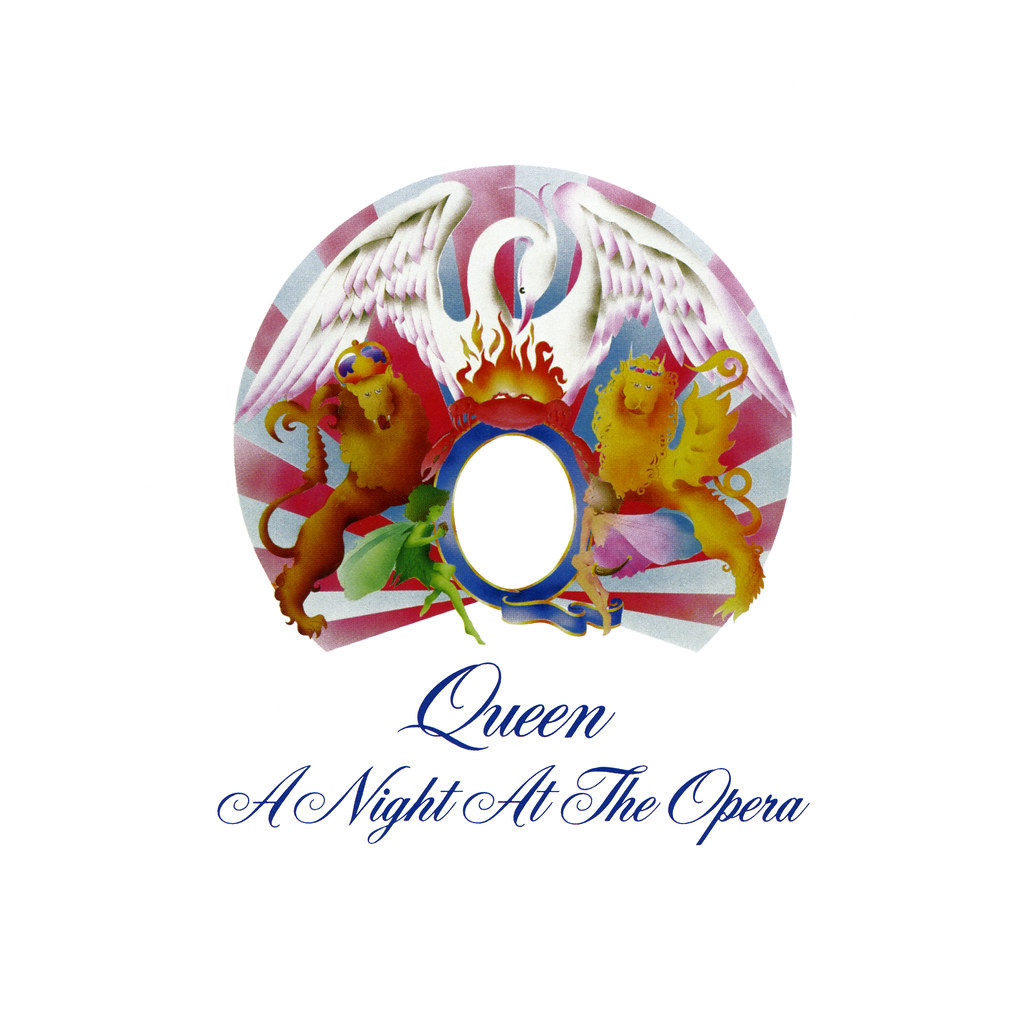
8. **A Day at the Races: Solidifying Success and Sonic Evolution (1976)**Following the monumental success of *A Night at the Opera*, Queen returned to the studio in 1976 with an ambition that mirrored their burgeoning fame, crafting *A Day at the Races*. This album, often considered a thematic sequel to its predecessor, not only borrowed its name from another Marx Brothers movie but also echoed its iconic cover art with a subtle yet distinct variation of the Queen logo. This continuity underscored a band confident in its established aesthetic, yet eager to push creative boundaries further.
For this effort, the band opted for self-production, with the invaluable assistance of Mike Stone, who also lent his vocal talents to several backing tracks. The album’s centerpiece, “Somebody to Love,” showcased Queen’s remarkable vocal prowess, with Mercury, May, and Taylor masterfully multi-tracking their voices to construct a resonant, gospel-inspired choir. This intricate vocal arrangement, combined with Mercury’s impassioned delivery, propelled the song to number two in the UK and number thirteen in the US, cementing its status as an enduring classic.
Beyond the lush harmonies, *A Day at the Races* also delivered one of Queen’s heaviest tracks, Brian May’s “Tie Your Mother Down.” This high-octane rock anthem quickly became a staple of their electrifying live performances, demonstrating the band’s continued ability to balance intricate melodicism with raw, unbridled power. Critically and commercially, the album was a triumph, soaring to number one in both the UK and Japan, and reaching number five in the US, a testament to their unwavering creative momentum.
Amidst their studio endeavors, Queen also etched their name into history with a landmark free concert in London’s Hyde Park on September 18, 1976. Organized by entrepreneur Richard Branson, this event drew an astounding audience of 150,000, setting a new attendance record for the park. The sheer scale of the crowd underscored Queen’s colossal appeal, though the evening ended with a touch of rock-and-roll defiance as police intervention prevented an encore, leaving fans clamoring for more of their captivating presence. This period exemplified Queen’s ability to consistently innovate while delivering accessible, stadium-ready anthems.
Read more about: Queen’s Royal Ascent: A Deep Dive into the Legendary Band’s Formative Years and Iconic Breakthroughs
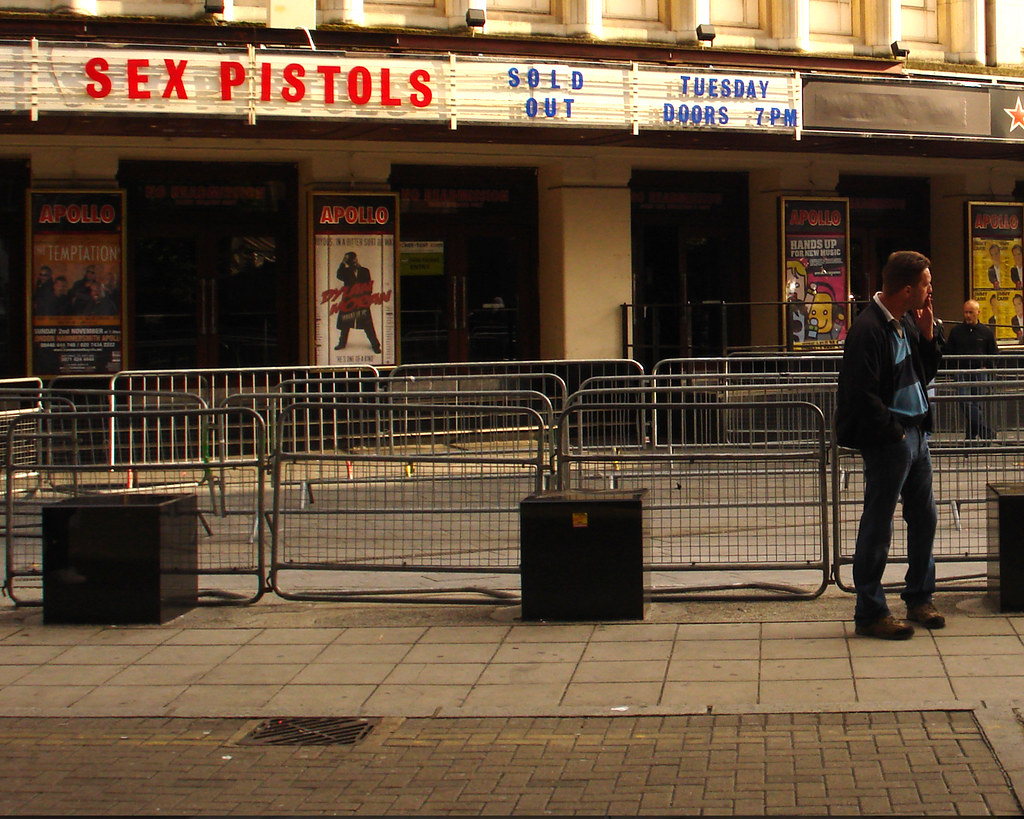
9. **News of the World and Enduring Anthems (1977)**The year 1976 also saw a pivotal, albeit unintended, moment in rock history involving Queen. On December 1, the band was scheduled to appear on London’s *Today* programme but pulled out at the last minute. Their sudden absence led to the infamous, expletive-laden interview with Bill Grundy featuring their EMI labelmates, the Sex Pistols—a moment that dramatically reshaped the punk rock narrative. This unplanned detour served as a stark backdrop to Queen’s own trajectory, which continued its ascent with an unwavering commitment to musical grandiosity.
Queen’s touring in 1977 reached new heights, featuring sold-out shows at New York’s prestigious Madison Square Garden, supported by Thin Lizzy. These performances were a testament to their growing influence and showmanship, leading to a significant accolade in 1978: the Madison Square Garden Gold Ticket Award, recognizing over 100,000 unit ticket sales at the revered venue. Such milestones reaffirmed their status as a formidable live act, capable of commanding the largest stages.
Their sixth studio album, *News of the World*, released in 1977, proved to be another commercial and critical juggernaut, achieving four-times platinum status in the US and double-platinum in the UK. This album was a masterclass in crafting material perfectly suited for massive live audiences, yielding two of rock’s most universally recognized anthems: “We Will Rock You” and the poignant rock ballad “We Are the Champions.” Both tracks transcended their musical origins to become enduring international sports anthems, with “We Are the Champions” climbing to number four in the US.
Robert Hilburn of the *Los Angeles Times* lauded the subsequent *News of the World* Tour in November 1977 as the band’s “most spectacularly staged and finely honed show.” The album’s indelible impact ensured Queen’s sound resonated far beyond traditional rock circles, demonstrating their unparalleled ability to create music that united vast audiences, transcending genres and generations to become an intrinsic part of global culture and celebration. Their command over stadium-rock theatrics was now undisputed.
Read more about: Queen’s Royal Ascent: A Deep Dive into the Legendary Band’s Formative Years and Iconic Breakthroughs

10. **Jazz and the Crazy Little Thing Called Love (1978-1979)**In 1978, Queen unveiled their seventh studio album, *Jazz*, an ambitious release that further diversified their musical palette. While reaching number two in the UK and number six on the *Billboard* 200 in the US, initial critical reviews were somewhat mixed, perhaps reflecting the album’s adventurous spirit. However, hindsight has been kinder to *Jazz*, with subsequent reviews often more favorable, recognizing its eclectic charm and boldness. The album notably featured the hit singles “Fat Bottomed Girls” and “Bicycle Race,” released together on a double-sided record, showcasing their knack for catchy, often playful, rock anthems.
Another standout track from *Jazz*, “Don’t Stop Me Now,” exemplified the band’s exuberant vocal harmonies and Mercury’s characteristic flair, becoming a beloved highlight in their repertoire. This period saw Queen tirelessly expanding their global footprint, embarking on extensive tours across the US and Canada in 1978, followed by significant runs in Europe and Japan throughout much of 1979. Their relentless touring schedule reinforced their reputation as a powerhouse live act.
Adding to their burgeoning discography, Queen released their first live album, *Live Killers*, in 1979, which quickly achieved double-platinum status in the US, capturing the raw energy and spectacle of their concerts. This was swiftly followed by the hugely successful single “Crazy Little Thing Called Love.” This rockabilly-inspired track, delivered in the distinctive style of Elvis Presley, proved to be an instant global phenomenon, making the top 10 in numerous countries, topping the Australian ARIA Charts for seven consecutive weeks, and becoming the band’s first number one single in the US, reigning atop the *Billboard* Hot 100 for four weeks.
“Crazy Little Thing Called Love” marked a unique milestone for Freddie Mercury, as he wrote the song on guitar and played rhythm guitar on the record, making it the first time he performed guitar in concert. This demonstrated his versatile musicality beyond his iconic vocal range. Capping off a prolific year, Queen accepted an invitation from Paul McCartney to play the opening night of the Concert for the People of Kampuchea in London on December 26, 1979, an event that served as the final date of their Crazy Tour of London, solidifying their humanitarian involvement alongside their musical dominance.
Read more about: Queen’s Royal Ascent: A Deep Dive into the Legendary Band’s Formative Years and Iconic Breakthroughs
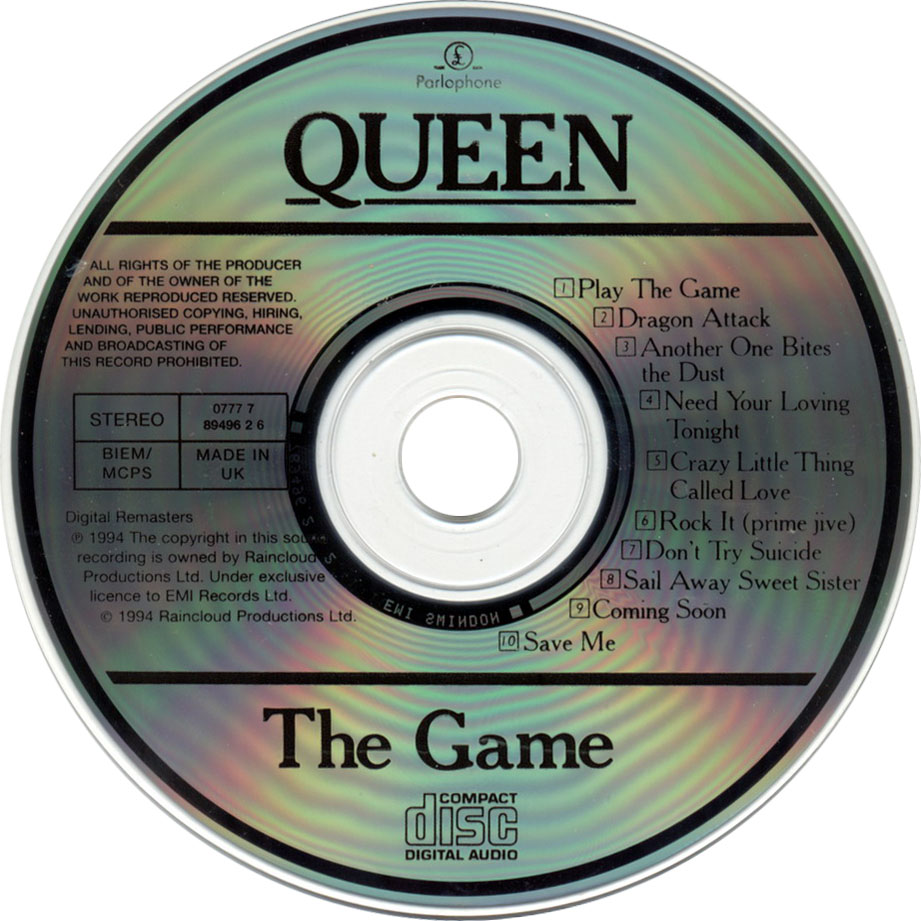
11. **The Game: New Soundscapes and Global Dominance (1980-1981)**Queen ushered in the 1980s with *The Game*, an album that marked a significant evolution in their sound and further cemented their global dominance. This record not only featured the already massively successful “Crazy Little Thing Called Love” but also spawned another chart-topping sensation, “Another One Bites the Dust.” Both singles reached number one in the US, showcasing the band’s diverse appeal and mastery of various musical styles. The genesis of “Another One Bites the Dust” is particularly interesting, as Michael Jackson, after attending a Queen concert in Los Angeles, suggested to Freddie Mercury backstage that the track should be released as a single—a piece of advice that proved extraordinarily prescient, as it spent three weeks at number one in October 1980.
*The Game* itself topped the *Billboard* 200 for five weeks and went on to sell over four million copies in the US, confirming Queen’s stature as a commercial powerhouse. This album also marked a pivotal moment in the band’s recording history: it was the first Queen album to feature a synthesizer. This was a notable departure from their earlier records, which famously carried a “No Synthesisers!” sleeve note. This note, often misunderstood as an anti-synth stance, was later clarified by producer Roy Thomas Baker as an effort to emphasize that their intricate, multi-layered guitar solos were indeed crafted with guitars, not electronic trickery, a common assumption at the time.
Building on this momentum, Queen delivered three sold-out shows at Madison Square Garden in September 1980, underscoring their unwavering live appeal. That same year, the band also released the soundtrack they had recorded for the science fiction film *Flash Gordon*, further demonstrating their versatility and willingness to explore different creative avenues. Their accomplishments were recognized at the 1981 American Music Awards, where “Another One Bites the Dust” won the award for Favorite Pop/Rock Single, with Queen also receiving a nomination for Favorite Pop/Rock Band, Duo, or Group, affirming their broad appeal across the music spectrum.
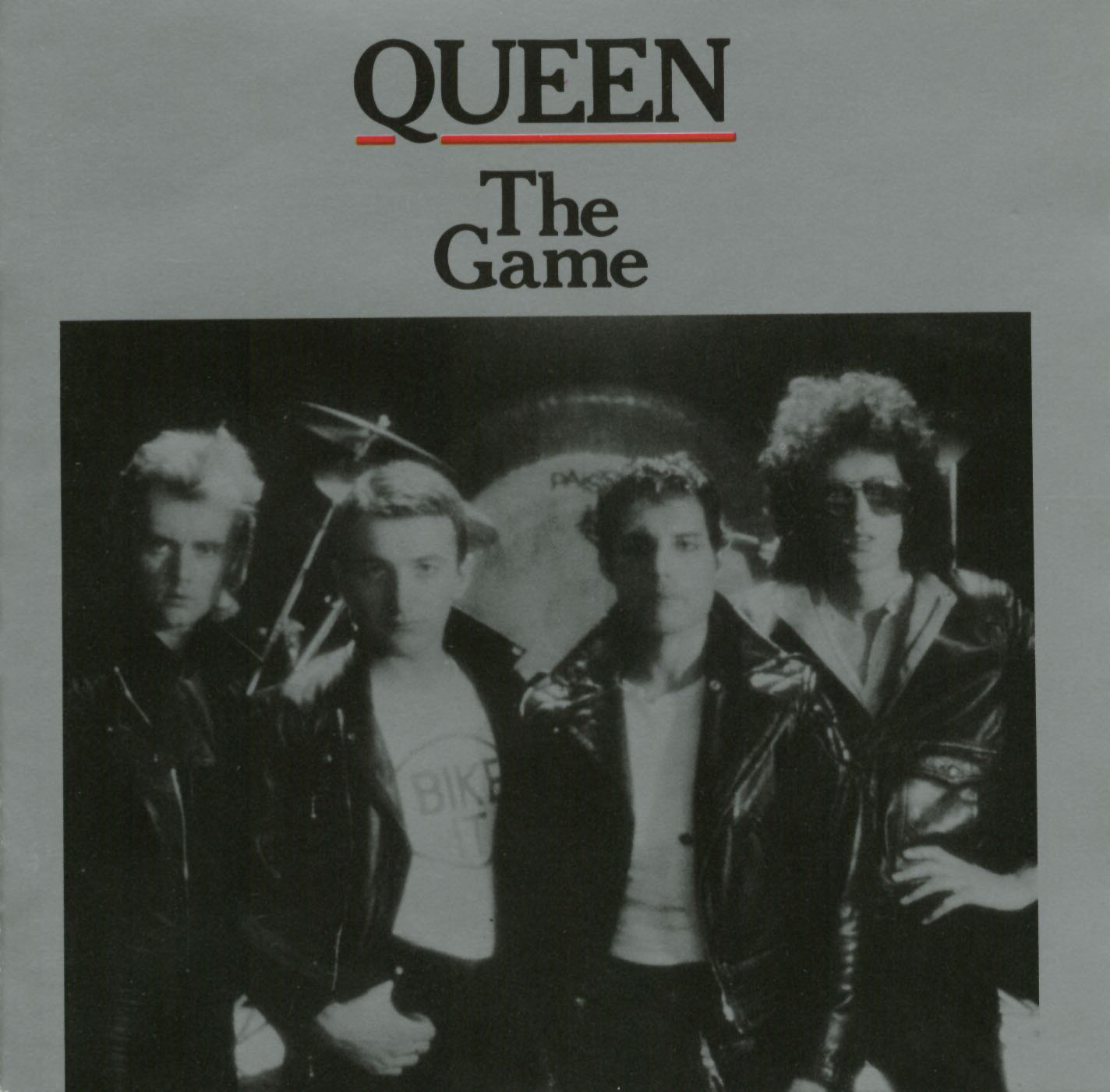
12. **Conquering South America: A Rock Liberation (1981)**In February 1981, Queen embarked on a groundbreaking leg of The Game Tour, traveling to South America and becoming the first rock band outside the Americas to play stadiums in Latin America. This monumental undertaking was viewed with keen interest across the entire music industry, as “the entire music industry waited to see if their ambitious plans would bear fruit,” as *Classic Rock* magazine aptly noted. The venture proved to be an unqualified triumph, transforming the landscape of popular music in the region.
Journalist Tom Pinnock, writing in *Melody Maker* in March 1981, eloquently captured the significance of the tour: “Queen chalked up a major international ‘first’ by becoming the band to do for popular music in South America what The Beatles did for North America 17 years ago. Half a million Argentinians and Brazilians, starved of appearances of top British or American bands at their peak, gave Queen a heroic welcome which changed the course of pop history in this uncharted territory of the world rock map.” The ecstatic response from millions, both in person and via broadcasts, cemented Queen’s status as pioneers.
The tour included an astonishing five shows in Argentina, with one concert in Buenos Aires drawing the largest single concert crowd in Argentine history, an audience of 300,000. Additionally, they played two unforgettable concerts at the Morumbi Stadium in São Paulo, Brazil, where they performed to over 131,000 people on the first night—setting a record for the largest paying audience for a single band anywhere in the world at that time—followed by more than 120,000 the following night. In a region largely under military dictatorships, the band was met with overwhelming fan fervor, prompting the promoter of their Buenos Aires shows to declare: “For music in Argentina, this has been a case of before the war and after the war. Queen have liberated this country, musically speaking.” Their second show at Vélez Sarsfield was broadcast on national television, reaching over 30 million viewers, and they famously met footballer Diego Maradona backstage.
The ballad “Love of My Life,” which topped the charts in Brazil and Argentina, became an emotional centerpiece of these South American concerts. Freddie Mercury would often pause, conducting the audience as they passionately took over the vocals, singing the song by heart with “word-perfect” English, as Lesley-Ann Jones described. Later that year, Queen continued their stadium dominance with massive performances in Mexico, playing to over 150,000 in Monterrey and Puebla. However, these gigs were marred by logistical challenges and audiences throwing projectiles, leading Mercury to conclude the final show with a famously defiant “Adios, amigos, you s!” The year concluded with two acclaimed nights at the Montreal Forum, Quebec, Canada, where one of Mercury’s most notable performances of “Save Me” was captured for the live album, *Queen Rock Montreal*.

13. **Creative Tensions: “Under Pressure” and the Hot Space Era (1981-1982)**In 1981, a serendipitous encounter led to one of Queen’s most iconic collaborations: the single “Under Pressure” with David Bowie. This spontaneous first-time collaboration with another artist occurred when Bowie happened to drop by the studio while Queen was recording. Mercury and Bowie, both titans of their craft, recorded their vocals on the track separately, each contributing individual ideas that melded into an unforgettable synergy. The song soared to the top of the UK charts, becoming an immediate and enduring classic that showcased the powerful alchemy of their combined talents.
October of that same year saw the release of Queen’s first compilation album, *Greatest Hits*, a meticulously curated showcase of the group’s highlights from 1974 to 1981. This album would go on to achieve monumental success, becoming the best-selling album in UK chart history and the only album to sell over seven million copies in the UK. As of July 2022, it has spent over 1000 weeks in the UK Album Chart, with *The Telegraph* estimating that approximately one in three families in the UK own a copy. It also earned nine-times platinum certification in the US and has sold over 25 million copies worldwide, solidifying its status as a timeless cultural phenomenon.
However, 1982 brought with it a period of creative turbulence, culminating in the album *Hot Space*. This record represented a significant stylistic departure from Queen’s trademark seventies sound, venturing into a fusion of pop rock, dance, disco, funk, and R&B. Recorded largely in Munich, it coincided with one of the most challenging periods in the band’s history. While Freddie Mercury and John Deacon embraced the new soul and funk influences, Brian May and Roger Taylor were less enthusiastic, openly critical of the influence Freddie’s personal manager, Paul Prenter, had on him.
As Brian May later reflected on the *Hot Space* recording, “We moved out to Munich to isolate ourselves from normal life so we could focus on the music. We all ended up in a place that was rather unhealthy. A difficult period. We weren’t getting along together. We all had different agendas. It was a difficult time for me, personally – some dark moments.” Producer Mack confirmed Prenter’s disdain for rock music and his pervasive influence on Mercury during the sessions. May was particularly scathing of Prenter for dismissing the vital connection between radio stations and the artist community, and for denying them access to Mercury. Roadie Peter Hince noted, “None of the band cared for him [Prenter], apart from Freddie,” viewing Mercury’s loyalty as misguided. Despite the internal friction and a confused reception from some fans due to the shift in musical direction, *Hot Space* still managed to reach number four in the UK. *Q* magazine would later list it as one of the top fifteen albums where great rock acts lost the plot.
During the subsequent *Hot Space* Tour, Queen encountered audiences who were unreceptive to the new material. At a gig in Frankfurt, Mercury famously confronted hecklers, stating, “If you don’t want to listen to it, go home!” The band’s touring lineup expanded to include former Mott the Hoople keyboardist Morgan Fisher, later replaced by Fred Mandel for North American shows. It was during this tour, on September 14 and 15, 1982, that Queen performed their last two gigs in the US with Freddie Mercury on lead vocals, playing at The Forum in Inglewood, California. Their success in North America had waned, partially attributed by *Rolling Stone*’s Mikal Gilmore to homophobia, as some fans perceived Mercury as a “brazenly gay rock & roll hero” and reacted negatively. The band’s final public performance in North America with Mercury was during the eighth-season premiere of *Saturday Night Live* on September 25, 1982, before concluding the year with a Japanese tour.

14. **The Works: Resilience, Controversy, and the Path to Live Aid (1983-1985)**Following the intense *Hot Space* era and its concluding tour in Japan in November 1982, Queen made a conscious decision to take a significant amount of time off, a period during which Brian May candidly admitted, “we hated each other for a while.” This hiatus allowed individual members to explore solo projects; Roger Taylor released his second solo album, *Strange Frontier*, while Brian May collaborated with Eddie Van Halen on the mini-album *Star Fleet Project*. This period of reflection and individual artistic pursuit eventually led to their reconvening nine months later, energized for a new creative chapter. The band also transitioned record labels in several key territories, moving from Elektra Records to EMI/Capitol Records.
In February 1984, Queen delivered their eleventh studio album, *The Works*, an offering that proved their resilience and enduring appeal. The album spawned several hit singles, including the nostalgic defense of the radio format, “Radio Ga Ga,” the powerful rock anthem “Hammer to Fall,” and the universally resonant “I Want to Break Free.” *Rolling Stone* lauded the album as “the Led Zeppelin II of the eighties,” and in the UK, *The Works* achieved triple platinum status, remaining in the album charts for an impressive two years.
However, the album’s reception in the US was more challenging. Issues with their new label, Capitol Records, which had recently severed ties with independent promotions teams due to a government report on payola, hindered its commercial performance. Compounding this, the music video for “I Want to Break Free,” a playful spoof of the British soap opera *Coronation Street* featuring the band members in drag, proved highly controversial and was famously banned by MTV. The concept, conceived by Roger Taylor and inspired by his girlfriend, was intended as a lighthearted counterpoint to their previous epic videos, with Taylor stating, “We wanted people to know that we didn’t take ourselves too seriously, that we could still laugh at ourselves.” Despite initial reluctance from Mercury, as noted by video director David Mallet, the video became an iconic piece of their visual legacy.
Queen then embarked on The Works Tour, which notably introduced keyboardist Spike Edney as an additional live musician. A contentious chapter of this tour involved nine sold-out dates in October 1984 in Sun City, Bophuthatswana, South Africa. Performing during the height of apartheid, and in violation of global divestment efforts and a United Nations cultural boycott, the band faced widespread outrage upon their return to England. Queen defended their decision by asserting they were playing music for fans and emphasized that the concerts were performed before integrated audiences. While they made a philanthropic donation to a school for the deaf and blind, they were fined by the British Musicians’ Union and placed on the United Nations’ blacklisted artists. Roger Taylor would later express regret for the decision in 2021, acknowledging, “we went with the best intentions, but I still think it was kind of a mistake.”
Despite the controversy, Queen’s live prowess remained undeniable. In January 1985, they headlined two nights of the inaugural Rock in Rio festival in Rio de Janeiro, Brazil, performing before over 300,000 people each night. *The Boston Globe* described their performance as “mesmerising,” and highlights from these electrifying nights were released on VHS as *Queen: Live in Rio*, broadcast on MTV in the US. In April and May 1985, Queen concluded The Works Tour with sold-out shows in Australia and Japan. These monumental live spectacles served as a powerful prelude to what would become one of the most defining moments of their career, a performance that would solidify their status as true rock royalty and etch their legend into the annals of music history: Live Aid. It was a moment where their unparalleled showmanship, combined with a collective global consciousness, converged to create an unforgettable cultural event, propelling Queen into an unmatched echelon of musical influence and adoration.
From their early struggles in West London to their triumphant stadium-filling spectacles and groundbreaking musical innovations, Queen’s journey is a testament to unwavering artistic vision and relentless dedication. They not only crafted a soundtrack that resonated with millions but also consistently challenged musical norms, broke commercial barriers, and redefined the very essence of live performance. Their legacy, woven through intricate harmonies, explosive guitar riffs, and Freddie Mercury’s peerless showmanship, continues to captivate new generations, solidifying their place as one of the most influential and beloved bands in the pantheon of rock and roll. The narrative of Queen is not merely a tale of musical achievement, but a vibrant tapestry of passion, genius, and a profound connection with their global audience that endures to this day, a true celebration of rock royalty.



